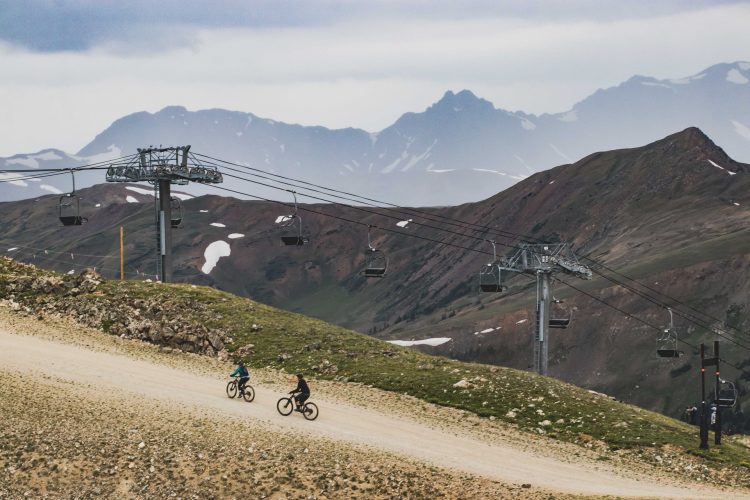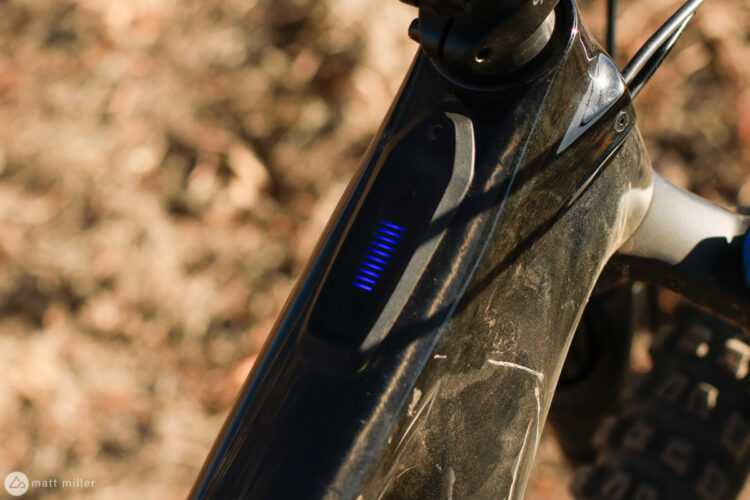
Nearly a year ago, we reported on a proposed gravel mine expansion in Salida, Colorado that would potentially displace the Solstice trail, which took six years of advocacy and funding to complete. On July 15, the Bureau of Land Management (BLM) released their environmental analysis for the gravel mine expansion, and three different potential outcomes. The BLM plans to make a final decision in October, and they have entered another public comment period.
The Solstice trail is a winding flow trail, just over a mile in length with 300 feet of elevation drop, south of the popular Methodist Mountain trail system in town. The BLM says there are about 20,000 riders on the trail system every year and Solstice itself has “become a very popular trail and is heavily used.” Salida Mountain Trails first proposed the Solstice trail in 2013. The trail opened in 2019. It’s estimated that the build cost was about $50,000.
On the other side of Solstice is the Hard Rock Paving and Redi-Mix mining company, a producer of aggregate or gravel and their reserves are estimated to run out in about six months if they don’t expand. The area has been mined since the 1800s and the Salida main pit has been mined since the 1970s. The aggregate is mostly used for road base. Hard Rock submitted a proposal to expand in 2017 and to redesign their access road for safety reasons.
Last year when the BLM determined that the proposed expansion would affect the Solstice trail they started a public comment period and began an environmental analysis. Hard Rock submitted an alternative plan, one that would still affect the Solstice trail, but would allow for rerouting. With the analysis complete and an alternative proposal on hand, the BLM has evaluated three different outcomes for the gravel mine expansion.
Solstice trail’s future
Alternative A, as the BLM calls it would cut into a half mile of the trail, and Hard Rock would be responsible for paying for a professional trail designer and builder to accomplish the redesign. There is no guarantee what the redesign would hold, when it would take place, and how long it would displace riders from the trail.
Hard Rock would install earthen berms to serve as a visual and sound buffer from mining noise. The BLM says that this option would add an additional 50 years of reserves to the mine, however “the mine life would strongly depend upon the future demand and viability of the material and maximum extent of the potential reserves. As the max extent and depth of the deposit is unknown to the operator in the southern region, the mine life and potential reserves are an estimate based on the maximum expansion parameters.”
The BLM adds that the existing trail would “risk a loss of quality and user experience that trail users have come to expect in this area,” and knows that the trail is highly valued in its current alignment. Another potential negative is that, “because the trail was designed and constructed using partner grant funding, a complete rebuild may give an unfavorable impression to future grant requests.”
Alternative B would leave the Solstice trail in place and the expansion of the mine would run along the eastern edge of the existing trail. A 30 foot buffer would exist between the trail and the mine boundary to provide a visual barrier. An earthen berm would be constructed, but the dimensions wouldn’t be finalized until the construction is authorized.
This option would give the mine a life of another 30 years, with about 4.1 million net tons of aggregate, estimates the BLM. This could still affect how users experience the trail.
Alternative C would deny the expansion and road alignment, the trail would be unaffected, but the existing access road would remain unsafe for truckers transporting product from the mine. This option seems unlikely to happen though, as that would force truckers to transport aggregate from sister mines that are 25 miles further or more from the current area, and as Colorado’s population and home demand has soared, especially over the pandemic, there’s an even greater demand for aggregate like that produced by Hard Rock.
Since the value of aggregate is quite low, but trucking costs are high, it would be ideal for the mining company to keep producing gravel in Salida.
“Since the existing mine and proposed expansion are located one mile south of the City of Salida,” says the BLM, “the growing community would directly benefit from the availability of local mineral materials such as gravel, roadbase, asphalt, concrete and a variety of other landscaping and construction materials.”
The BLM also accounts for the growing population and the desire for recreation. Around a quarter of the jobs in Chafee County come from the hospitality industry, though they note that these are some of the lower paying jobs in the county. Mining jobs account for less than one percent and are some of the higher-paying jobs.
During the initial scoping period, the majority of the comments submitted regarded recreation. Over 500 comments were submitted that the agency categorized under recreation, with half of that under the socioeconmic category, 105 regarding health and safety, and 71 regarding air quality and climate.
The BLM is an agency that always seeks to balance a variety of land use needs. “These uses include mining, and more specifically in this case, the development of mineral materials,” they say in the environmental analysis.
Comments can be submitted here until August 14. We have reached out to Salida Mountain Trails and will update this story with comments when they are available.





















0 Comments